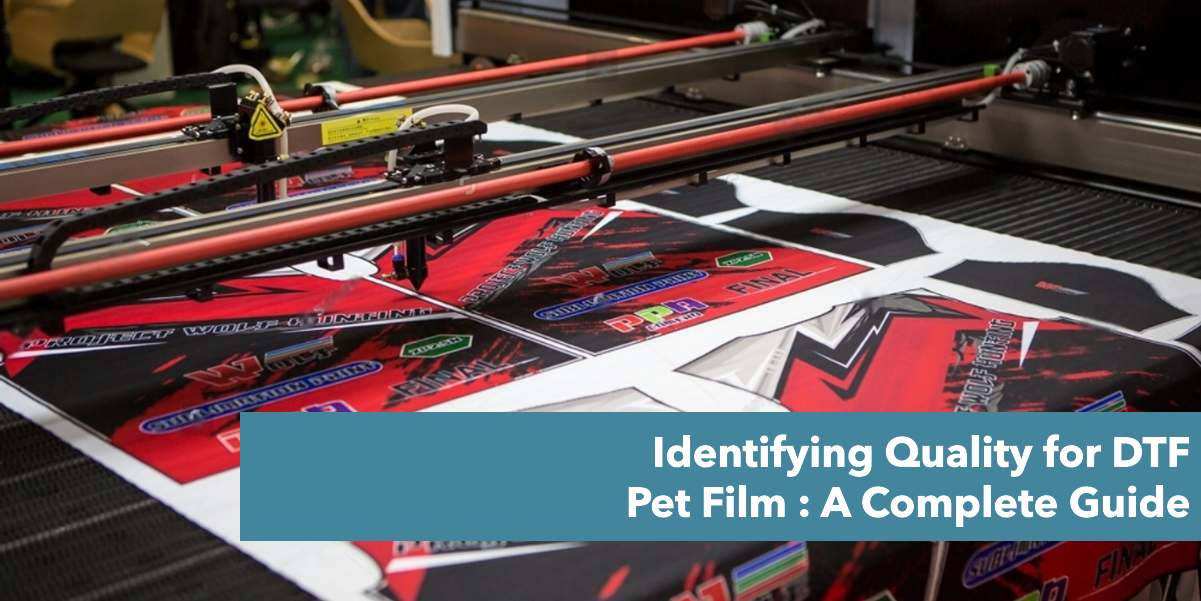Direct to Film (DTF) printing has become a popular way to create vibrant and long-lasting designs on all sorts of fabrics. But just like any other printing method, the quality of your final product hinges on using the right materials. And when it comes to DTF, one crucial element is the DTF PET film.
In this blog, we'll guide you through the key things to look for when checking the quality of your DTF PET film. We'll break it down into simple steps you can follow, so you can ensure you're getting the best possible results for your DTF printing projects. Whether you're a seasoned pro or just starting out, this guide will help you avoid printing headaches and produce stunning DTF transfers every time.
How to Check the Quality of the DTF Pet Film?
Visual Inspection:
For surface flaws, we're going to carefully check the film for any scratches, black spots, or wrinkles. These little imperfections can really affect how your prints turn out, so it's important we catch them early.
As for clarity and flatness, it's over to you to make sure the film is crystal clear, completely haze-free, and lying perfectly flat without any bends or warping. It's all about getting that perfect print at the end of the day.
Printing Performance:
Ink Absorption Rate: A top-notch DTF film should soak up the ink just right, within a specific sweet spot. We're aiming for the ink to dry in about 30-60 seconds after it hits the film. This timing is crucial to prevent any ink bleeding and to make sure everything transfers perfectly.
Ink Compatibility: Now, it's your turn to put the film to the test with your particular DTF inks. You'll want to see a smooth, even spread of ink on the film, without any bleeding or feathering messing things up.
Heat Resistance:
Now, when we talk about curing DTF film, the standard temperature range we look at is between 120-140°C. But here's the cool part: some of the really top-notch films out there can handle even more heat up to 160°C to be precise, without messing with their ability to print or transfer beautifully. This is great news because it gives you a bit more freedom to play around with your heat press settings, especially when you're working with a variety of materials.
Color Gamut:
Let's focus on finding a DTF film that gives you a wide color gamut. This is key to making sure your prints can capture and accurately reproduce a huge range of colors. It's super important, especially if you're working on designs that have a lot of intricate details or just a ton of different colors.
Wash Fastness Standards:
For washing tests, consider industry standards like the AATCC (American Association of Textile Chemists and Colorists) wash cycles. These include tests for laundering with detergents, exposure to light, and dry cleaning solvents. Aim for DTF film that maintains color vibrancy and design integrity after undergoing these standard wash cycles.
Adhesion Strength:
Tape Test: During the tape test, ensure the ink remains firmly adhered to the film after peeling the tape off at a 45-60° angle with a force of 2-3 Newtons (N) for 2-3 seconds.
Film Opacity: Measure the film's opacity using a densitometer. A higher opacity value indicates better blocking power, especially for dark-colored substrates where the film needs to prevent show-through of the garment color.
Film Thickness: While film thickness can vary depending on the application, a common range for DTF film is between 80-120 microns. Consider the trade-off between durability (thicker films) and printability/transfer efficiency (thinner films).
Surface Roughness:
Utilize a profilometer to measure the surface roughness of the film in micrometers (µm). A smoother surface (lower µm value) promotes better ink adhesion and sharper print details.
Film Flatness:
Employ a dial gauge to measure film flatness deviations across its surface. Ideally, the deviation should be minimal (within a tolerance of 0.05mm) to ensure consistent ink laydown and prevent printing defects.

